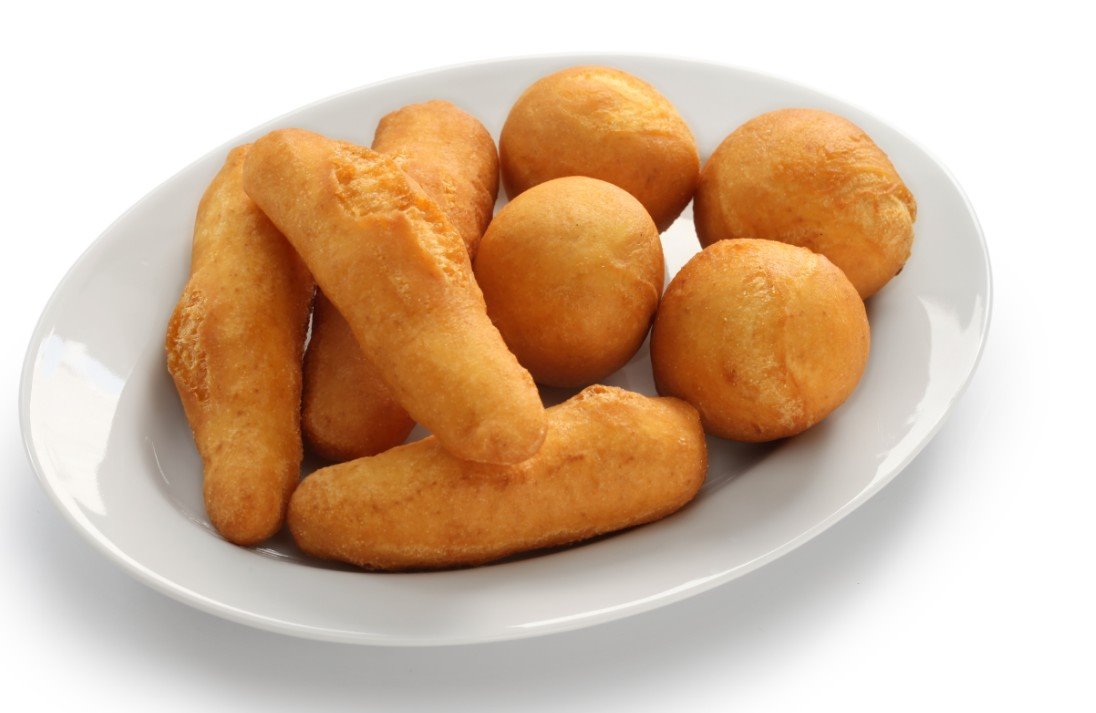Jamaican cuisine is a vibrant blend of flavors, textures, and colors, each dish telling its own unique story. One such dish is the Jamaican Festival, a sweet dumpling that has become a staple of Jamaican gastronomy. This article will take an in-depth look at the Festival, exploring its origins, ingredients, and significance in Jamaican culture.
The Festival Dumpling
The Festival is a delectable fried dumpling that is part of the traditional Jamaican food palette. Crispy on the outside and soft on the inside, it is often compared to sweet cornbread and hushpuppies. The Festival is typically golden brown, with a slightly sweet taste and a delightful blend of crispy and fluffy textures that make it a favorite among both locals and tourists.
Festival Dumplings vs. Fried Dumplings
While similar to fried dumplings, what sets Festival apart is the addition of cornmeal to its dough. The combination of cornmeal, flour, and brown sugar gives the Festival its unique taste and texture. The sweetness from the brown sugar and the density from the cornmeal ensure a flavorful, crispy coating, creating a delightful contrast to the soft, fluffy inside.
The Making of Jamaican Festival
Creating the perfect Festival involves mixing all-purpose flour, fine cornmeal, granulated sugar, baking powder, and salt. The addition of vanilla extract and milk then forms a dough that is rolled into long oval shapes and deep-fried until golden brown. The result is a Festival dumpling that is crispy on the outside, soft and fluffy on the inside, and undeniably delicious.
How to Enjoy Festival Jamaican Food
Despite its sweet taste, the Festival is not just a snack or dessert. It is often served as a side dish, complementing a variety of traditional Jamaican dishes. Its sweetness balances the spicy flavors of dishes like jerk chicken and escovitch fish, and it is also a great accompaniment to saltfish dishes. The Festival, served warm and fresh, enhances any Jamaican meal, making it a versatile and beloved part of Jamaican cuisine.
Where to Find Festival Dumplings in Jamaica
For those visiting Jamaica, Festival dumplings are easy to find. They are available in restaurants, street food stalls, snack bars, and beachside cafes all over the island. Given their popularity, they are a staple side dish to many traditional Jamaican meals, making them a must-try for any food lover exploring Jamaica’s rich culinary landscape.
Making Festival at Home
If you’re not in Jamaica, do not fret! Festival dumplings are relatively simple to make at home. With the right ingredients and a little patience, you can recreate this Jamaican classic in your own kitchen. The key is to ensure that the dough is moist enough to form into a ball easily, but not so wet that it becomes sticky. It’s also important to maintain the oil at the correct temperature for deep frying to achieve the perfect golden brown color and crispy texture.
Tips for Perfect Festival Dumplings
A few tips can help ensure your homemade Festival dumplings turn out perfect. First, make sure your oil is at the right temperature for deep frying. Using a thermometer can help maintain the oil at an optimal 350 degrees Fahrenheit. Second, the dough is best when made fresh and eaten the same day, as it can become dry and chewy if left for too long. Lastly, while it might be tempting to try healthier cooking methods, Festival dumplings are best when deep-fried, as other methods like air frying do not yield the same delicious results.
Pairing Festival with Jamaican Dishes
Festival dumplings can be paired with a wide range of Jamaican dishes. Their slightly sweet taste makes them a perfect complement to spicy dishes like jerk chicken or escovitch fish. They also pair well with savory dishes like ackee and saltfish, as the sweetness of the Festival provides a delightful contrast to the saltiness of the fish. No matter what they’re paired with, Festival dumplings add a touch of sweetness that enhances the overall flavor of the meal.
Nutritional Value of Festival
In terms of nutrition, Festival dumplings are a source of carbohydrates and protein, with a small amount of fat. They also contain dietary fiber from the cornmeal and vitamins and minerals from the milk and flour. However, like all fried foods, they should be consumed in moderation as part of a balanced diet.
Festival: More Than Just Food
The Festival is more than just a delicious dumpling; it is a staple of Jamaican culture. The name ‘Festival’ itself suggests a celebration, a gathering, a party. This is symbolic of how food in Jamaica is not just about nourishment but is also about community, celebration, and cultural expression. Whether it’s a family gathering, a street party, or a national holiday, you can be sure to find Festival dumplings on the menu.
Demystifying the Name ‘Festival’
While the name ‘Festival’ might suggest that these dumplings are reserved for special occasions, that’s not the case. Festival dumplings are enjoyed at any time, not just during festivals. The name ‘Festival’ is thought to have been coined by a man named Leslie Clarke, who wanted a name that reflected the joy and celebration associated with this beloved Jamaican food.
Conclusion
The Jamaican Festival dumpling is a delightful blend of sweet and savory, crispy and fluffy, tradition and innovation. Whether enjoyed as a side dish to a spicy Jamaican meal, as a quick snack on a busy day, or as part of a celebratory feast, the Festival is a testament to the rich and diverse culinary tradition of Jamaica. So the next time you’re in the mood for a little taste of the Caribbean, why not whip up some Festival dumplings? It’s a culinary celebration you won’t want to miss!
For recommendations on some of the best times to visit Jamaica, you can check out our guide here.
—
If you’re traveling to Jamaica alone, ensure you take all the necessary measures to keep safe. Read about how you can stay safe while visiting Jamaica. If you decide to visit any resort, be sure to tag us in your photos and videos @resortcaribbean, and follow our socials: Instagram, Facebook, YouTube.






![What You Need to Know before Visiting Azul Beach Resort Negril Jamaica Gourmet All-Inclusive [Resort Review] Azul Beach Resort Pool](https://resortcaribbean.co/wp-content/uploads/2021/09/20210828_091210-2-100x70.jpg)
![Visiting Ocean Coral Spring – One of Jamaica’s Most Famous Resorts [Resort Review] Visiting Ocean Coral Spring - One of Jamaica's Most Famous Resorts](https://resortcaribbean.co/wp-content/uploads/2021/11/20211106_155809-100x70.jpg)
![What is it like Visiting Iberostar Rose Hall Beach, Iberostar Grand Rose Hall, Iberostar Selection Rose Hall Suites? [Resort Review] What is it like visiting Iberostar Rose Hall Beach, Iberostar Grand Rose Hall, Iberostar Selection Rose Hall Suites?](https://resortcaribbean.co/wp-content/uploads/2023/03/20151129_122732-100x70.jpg)